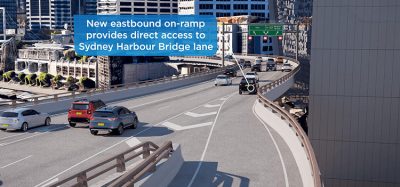CCTV in German public transport
- Like
- Digg
- Del
- Tumblr
- VKontakte
- Buffer
- Love This
- Odnoklassniki
- Meneame
- Blogger
- Amazon
- Yahoo Mail
- Gmail
- AOL
- Newsvine
- HackerNews
- Evernote
- MySpace
- Mail.ru
- Viadeo
- Line
- Comments
- Yummly
- SMS
- Viber
- Telegram
- Subscribe
- Skype
- Facebook Messenger
- Kakao
- LiveJournal
- Yammer
- Edgar
- Fintel
- Mix
- Instapaper
- Copy Link
Posted: 23 June 2006 | Leon Hempel, Technical University of Berlin | 1 comment
Setting the Scene: Transport as arena for surveillance systems
Although CCTV systems in public urban transport have been around since the beginning of the 1960s, only limited camera surveillance existed in public transport for about thirty years. It was not until the beginning of the 1990s, in common with the worldwide trend of increasing surveillance systems in public streets and places, that the world witnessed a strong proliferation of CCTV coverage within public urban transport systems. Today, be it in London, New York or Tokyo, Vienna, Budapest, Berlin or Copenhagen underground trains, trams and buses are well equipped with different kinds of camera systems.
Setting the Scene: Transport as arena for surveillance systems Although CCTV systems in public urban transport have been around since the beginning of the 1960s, only limited camera surveillance existed in public transport for about thirty years. It was not until the beginning of the 1990s, in common with the worldwide trend of increasing surveillance systems in public streets and places, that the world witnessed a strong proliferation of CCTV coverage within public urban transport systems. Today, be it in London, New York or Tokyo, Vienna, Budapest, Berlin or Copenhagen underground trains, trams and buses are well equipped with different kinds of camera systems.
Setting the Scene: Transport as arena for surveillance systems
Although CCTV systems in public urban transport have been around since the beginning of the 1960s, only limited camera surveillance existed in public transport for about thirty years. It was not until the beginning of the 1990s, in common with the worldwide trend of increasing surveillance systems in public streets and places, that the world witnessed a strong proliferation of CCTV coverage within public urban transport systems. Today, be it in London, New York or Tokyo, Vienna, Budapest, Berlin or Copenhagen underground trains, trams and buses are well equipped with different kinds of camera systems.
In recent years in Germany, successful open street CCTV schemes have given rise to the installation of cameras in local transport systems. In Stuttgart, for example, cameras have been installed in the tram vehicles after the local open street system proved to be an effective tool to combat crime. On the other side of the coin however, the transportation sector as a whole seems to have unique characteristics when it comes down to goals and practices of surveillance measures. To begin with, in our globalising world, transport sites have begun to resemble knots, where diverse mobile bodies (humans and non-humans), come together, gather, but are at the same time controlled by diverse spatial structures and multiple technologies. With mobility having significantly increased in recent decades, the emergent situation has provided new many new regulatory and control challenges. As David Lyon, a leading surveillance theorist, points out: “Mobility creates a world of nomads and unsettled social arrangements, so it is not surprising that in transit areas, such as airports, surveillance practices are intense.” Not the few, but the masses and their behaviour are scanned through the multiple senses of the new surveillance technologies such as CCTV.
Rail, underground, buses and trams: The proliferation of CCTV on German public transportation systems
Compared to other European countries like the UK, France, The Netherlands or Hungary, in Germany the proliferation of CCTV has been rather limited, especially in the public realm. This is due primarily to a strong data protection tradition in German constitutional law which regulates (video) surveillance rather strictly- at least in theory. In its ‘census judgment’ from 1983, the German Constitutional Court argued that the knowledge of why, and by whom someone is under surveillance, is crucial for a democratic society and the autonomy of its citizens. Thus, the court instituted the concept of the ‘right to informational self-determination’ (Recht auf informationelle Selbstbestimmung) from the German Basic Law. This essentially means that every unauthorised collection of personal data violates civil rights except in cases where it is used in regard to public welfare. Public schemes in Germany therefore require a legal basis within the police and public order acts of each of the 16 German states. Private and non-police public CCTV surveillance however, such as public transport systems, are regulated by amendments of the federal and state data protection acts. Before installation by large transport providers such as the Hamburg Hochbahn, surveillance systems must have the consent of the data protection commissioner of the individual state, who oversees that the deployment is in tune with current regulations and agreements on the recording time, the seizes of pictograms, etc. Additionally, technical specifications regarding storage and organisation must be in line with the type of data protection needed to insure that surveillance information is not misused. This goes so far that in Berlin, an independent evaluation has been demanded by the data protection commissioner before starting the pilot project on 24 hour recording!
Indeed, Berlin is exemplary of the back and forth of the public debate concerning video surveillance in publicly accessible space. The capital is the last of the German states that has not yet amended their police and public order acts to authorise CCTV surveillance of public space. The benefits and threats of video surveillance are being hotly debated. With every serious crime reported in the media, the discussion begins anew with advocates stressing the ‘considerable security lacks’ of the city, and insisting on the use of CCTV not only in public streets and places, but also in the public transport system.
On the other hand, critics constantly refer to privacy and the determination of the court that a ‘right to informational self-determination’ exists. Sceptics question the handling of the massive amount of images and thus the overall usefulness of large scale surveillance measures. In regard to the upcoming World Cup championship, further arguments for introducing public surveillance have been given, for example by the Berlin Minister of the Interior, who found an exception in the law to install CCTV temporarily at the location where people will meet for celebrations.
Most of Berlin’s public urban transport (buses, trams and the underground) is provided by the Berliner Verkehrsbetriebe (BVG) and the S-Bahn (another citywide rail system), is a subsidiary of the German Railway. About 1.3 million people use public transport in Berlin everyday. The underground network is the largest in Germany, serving 170 stations over the course of approximately 151.7 km of railway. In the underground, the first camera installation was carried out in 1981 with the aim of assisting in more efficient operation. Numbers from May 2002 show that at least 201 cameras enable the train operator to monitor the length of the train before he or she departs from a station. Meanwhile, more or less all of the 170 stations are equipped with different numbers of cameras for a variety of reasons, which are discussed below.
In 1996, the BVG introduced the Emergency and Information System (NIS-System) for passenger communication to improve security on platforms. This system consists of 510 fixed platform video cameras which are trained on the emergency and information polls. Real time monitoring however, occurs only randomly, as they normally only record when someone presses the button to activate them. In addition, even when they are activated, their location, at either end of the stations, normally allows for one to observe only the entrances of the platforms. Only in the case of passenger demand, images are transmitted and stored in one of four BVG information and control rooms, it should be quite obvious that the actual surveillance intensity of these cameras is rather small. However, there are 54 cameras to monitor areas in need of ‘special attention’, which are primarily crime hot spots such as meeting points of drug dealers, but images are only recorded in the case of an incident.
Even though the intensity of the video system is rather small, things are changing. Only very recently, in March 2006, the Berlin underground started a 12-month pilot project to record images on three of its major lines. 300 cameras of the NIS system were equipped with a recording device. BVG aims to test whether it can improve security by not only to recording on a case by case basis, but around the clock. This test has been restricted however, as the data collected on the fileservers is overwritten automatically and the information is erased every 24 hours. Only in the case of a reported incident, either to the police or to BVG, is the video feed forwarded to the control room of the Safety Headquarters of BVG, which then must to be watched within this 24 hour time limit. If eventually demanded by the Berlin Data Protection Commissioner, the project will be evaluated by an independent research team to decide whether this recording system should be continued and extended.
Within the transit vehicles themselves, such as U-Bahn cars, buses and trams, cameras have been used since 1999. Again, images are recorded only when the driver observes an incident. This is problematic because drivers of buses and trams have repeatedly testified that monitoring and driving simultaneously is impossible in most circumstances. Many cases have been reported where drivers have either started the recording device too late or did not notice that an incident was taking place at all.
Despite the number of regulations, CCTV has become a common instrument within German public transport systems, on the regional and national levels as well. Additionally, most large transport providers use CCTV. Next to local transport providers, the most important actor in regard to CCTV deployment is the German Railway Company (Deutsche Bahn, AG). In the mid-1990s, the company introduced its so called ‘3-S-Concept’ which was developed in the context of the Deutsche Bahn’s large restructuring process after the reunification and merging of the eastern Reichsbahn and the western Bundesbahn in 1991. The formerly state owned company was converted into a publicly traded company in 1994, and although the majority of shares are still possessed by the federal government, this privatisation had serious consequences for the strategy of the company which resulted in operational restructuring, outsourcing and new marketing strategies.
The three Ss of the ‘3-S-Program’ correspond to the three columns of the programme: Service – Sicherheit – Sauberkeit (service, safety, cleanliness). At the core of this program is the use of video surveillance. Cameras are mostly fixed on platforms, and speed-dome cameras reside in the halls and station buildings. At Frankfurt Main’s main station, 150 cameras are installed, in Leipzig 130, and in Hamburg 60, for example. With the help of these cameras, operational processes within train stations – and occasionally also on the tracks – are steered and optimised. The cameras are connected to the so called ‘3-S-Centre’ which employs a multifunctional digital communication system with telephone and radio links, an emergency and information system and loud speaker devices. This integrated system aims to collect and distribute all information about the state of service facilities (train clearance, baggage cars, emergency points etc.), safety issues (train clearance, crime and nuisance behaviour) and the state of cleanliness (rubbish bins, smoking areas etc).
Since 2001, the Deutsche Bahn has had a public-private-partnership with the Federal Border Police (Bundesgrenzschutz) in order to increase the security of train stations. It has stated that its CCTV system of has been a large part of this successful co-operation. From October 2004 until December 2005, 751 offences were detected and 468 were successfully prosecuted using evidence from video images. Another 898 offences were prevented by further use of surveillance systems. Another example of cooperation between the Deutsche Bahn and the federal government, in 2005 a common security-centre was opened in Berlin, staffed 24 hours a day with 30 workers, including 8 officers of the Federal Border Police. The centre enables them to monitor all train stations throughout Germany and is thus a crucial step in the centralisation of the Deutsche Bahn’s camera network.
Is it proactive or reactive? Intentions and hopes of German transport providers
Usually transport providers claim that CCTV systems are installed in order to deter crime, to increase subjective feelings of security and to gather better evidence in the case of an incident. However, it is also apparent that these arguments have slightly changed over time. While in the beginning of the 1990’s, CCTV was most often introduced as an instrument to prevent crime, of late, goals of increased effectiveness in the prosecution of criminals have become primary in rationalising further surveillance measures. Especially since the London bombings of 2005, where successful prosecution would have been extremely difficult without CCTV assistance, the use of recorded images as evidence has been stressed more and more.
In general however, not many transport providers use such systems proactively. At least in Germany, systems in urban transport are in most cases only reactive, either by alarming staff to events that already happened or by providing images as evidence. Systems used in a proactive way – by integrating control room and on-floor staff – are not frequently implemented. Even in Berlin, the largest underground system in Germany, CCTV is not used proactively which is rather limited to the larger Deutsche Bahn train stations.
Given this, one may conclude that many transport providers in Germany either do not believe in any kind of proactive use of CCTV or that the use of personnel for this purpose is not logical. The reality probably lays somewhere in between. On the one side, evaluations of CCTV systems have shown that no matter where they have been implemented, they have consistently had very inconsistent outcomes. There are cases where cameras have been shown to have had an effect on crime and others where there was no effect. Often, successes are reported for the use of cameras against vandalism and pick-pocketing. In Hamburg, 20% less damage to property has been reported since cameras were installed in the U-Bahn cars in 2003. However, the problem is that these successes will likely be limited to a specific timeframe, until, for example, a new generation of graffiti ‘artists’ replaces the current one. Moreover, as for open street surveillance systems, the effect on offences that refer not to some kind of rational choice but are driven by emotions is rather limited. In regard to drug dealing and related offences, cameras have been shown to lead to some kind of displacement. Hence follows, the effect of cameras use heavily depends on the sort of crime and on the context the surveillance measure is embedded in.
But on the other side however, transport providers today often suffer from very tight budgets. In recent decades, reductions of personnel have been one consequence of this situation, a situation where the introduction of CCTV has been celebrated as a solution to keeping an eye on stations and vehicles. However, limiting the use of cameras to recording, and thus to reactive mechanisms, implies the threat of loosing insight into the crime situation of a transport network. Interestingly, people do not report crimes as frequently from locations where they know cameras are used. Numbers from a London bus garage with a very effective CCTV system justify a diffusion of responsibility, they show that after CCTV cameras were introduced, reported crimes decreased by over two thirds.
And what do the transport users say? According to most audits, people in Germany support the use of cameras in publicly accessible space and especially in transport areas. A study of BVG from 2003 indicates that more than three quarters of the respondents supported the use of cameras in underground vehicles, especially at night. After the London bombings 72% of the citizens of Hamburg supported an increase in the deployment of CCTV. On the other hand, one has to be careful with general statements like this. Regarding safety, most transport users also would give their preference to personnel rather than to cameras. Naturally – as one can see by the numbers of an evaluation of the enforcement mix of foot patrols and camera observations in London – the deterrence effect of personnel is much stronger than that of a camera. It is only common sense that it is impossible for a camera to intervene in critical situations. Therefore, in regard to a consistent use of CCTV in urban transport systems, it is necessary to develop mixed strategies based on the use of CCTV and a combination of other measures used in the context of security and safety. Cameras cannot replace human forces to combat crime but they can assist them.
Related topics
Security & Crime, Vehicle & Passenger Safety
Issue
Issue 2 2006









Public transportation areas like trains stations are full of crowded people, where a number of crimes could happen. Good that they have come up to this great idea. Thanks for sharing.